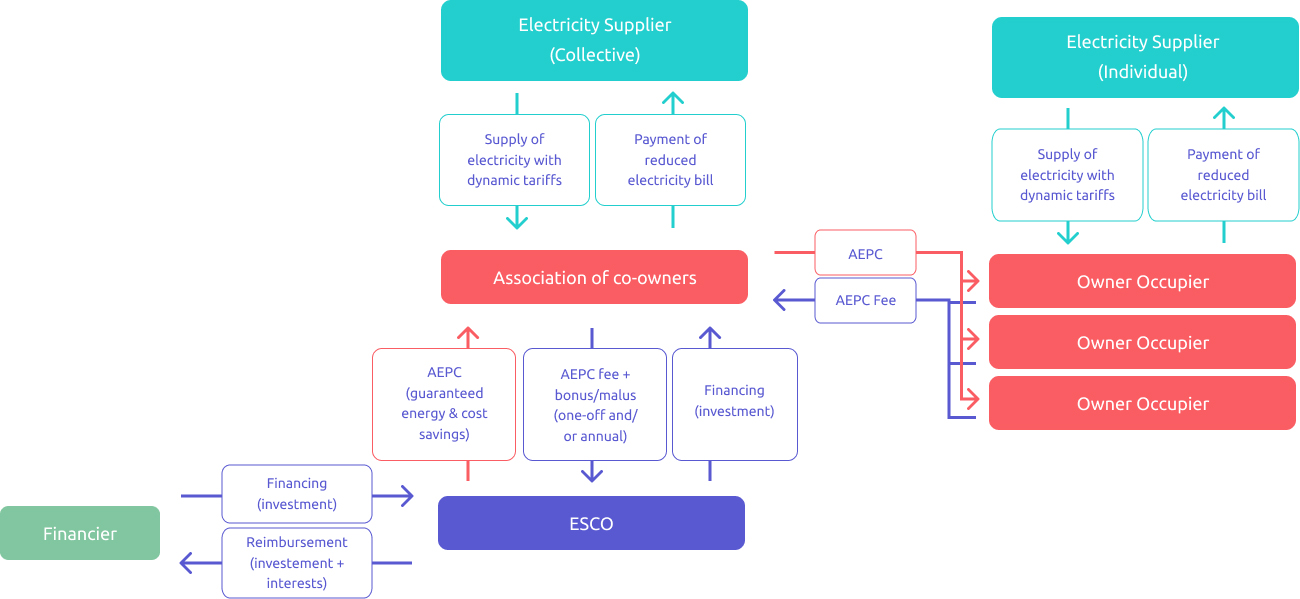Variation C.1
The business model in case of collective residential housing, i.e. apartment buildings with multiple apartment units is another variation of the more generic business model, applicable to this specific segment of residential housing. In this case, the building owners are collectively organized into what is known as an Association of Co–Owners (ACO). Investment decisions typically are taken for the whole co-ownership or apartment building, not only for common parts of the building (like hallways, basements, elevators collective boilers or PV panels on the roof, outside wall insulation, etc.) but even for some individual parts (like windows, inside wall insulation (which is rare) or even individual Heating Ventilation and Air-conditioning equipment to insure a common infrastructure across the apartments).
In this particular model it is assumed that all building co-owners are occupants of their apartments, which influences the business model, as this automatically implies that there is no split incentive between the apartment owner and the tenant. All energy and cost savings go the apartment owner who can use them to reimburse all or part of the investment.
Whether it is the case of Financial Institution (FI) or Energy Services Company (ESCO) financing, there needs to be both a global financing plan and individual financial plans per co-owner. FI or ESCO financing will typically consist of a collective loan or pre-financing contracted by the ACO. This engages all of the co-owners who participate in this financing to reimburse the part corresponding to their investment, determined either by individual costs (e.g. for their windows or boiler) or by the contractually agreed shares they own in the co-ownership (e.g. a common share of 120/1.000th or 500/10.000th).
In terms of electricity contracts that need to deliver dynamic pricing, they are mainly between electricity suppliers and the individual owner occupiers, but there may also be a collective contract between the ACO and another electricity supplier for the common parts of the building. Each may allow for different levels of flexibility corresponding to the equipment, the usage and the available tariffs.
